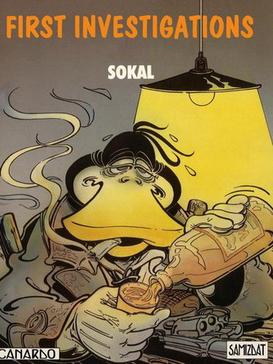Aline Kominsky-Crumb was een Amerikaanse striptekenaar bekend van haar autobiografisch werk dat even rauw als openhartig was.
Ze was getrouwd met Robert Crumb, met wie ze vaak samenwerkte.
Rust zacht Aline.

Aline Kominsky-Crumb was een Amerikaanse striptekenaar bekend van haar autobiografisch werk dat even rauw als openhartig was.
Ze was getrouwd met Robert Crumb, met wie ze vaak samenwerkte.
Rust zacht Aline.
Kevin O’Neill was een Brits striptekenaar.
‘Strips’ klinkt een beetje oneerbiedig. Het gaat eigenlijk over ‘graphic novels’.
Hij was vooral bekend van zijn werk aan The League of Extraordinary Gentlemen, het meesterwerk dat Alan Moore in 1999 bedacht.
Diane Noomin was an American comics artist associated with the underground comics movement. She is best known for her character DiDi Glitz, who addresses transgressive social issues such as feminism, female masturbation, body image, and miscarriages.
Here she is in a Video West Zippy the Pinhead episode broadcast in 1980 starring Jim Turner as Zippy and Diane Noomin as DiDi Glitz.
Noomin was married to Bill Griffith, the man who created the character of Zippy.
Henri Vernes was a Belgian author best known for creating the comics hero Bob Morane.

Benoît Sokal was a Belgian comic artist best known for his comics series Inspector Canardo (1979-2013). Canardo is an alcoholic, womanizing private investigator.
I was fond of him in the late 1980s, my comics phase, when I was especially fond of RanXerox.
Richard Corben was an American illustrator and comic book artist.
I liked his coloring.
Here the short film Neverwhere, from the film Heavy Metal.
He said sweet things about my hero Tanino Liberatore’s creation RanXerox.
Quino was an Argentine cartoonist best-known for his satirical comic strip Mafalda which ran from 1964 to 1973.
Mafalda is a 6-year-old girl. On the one hand she is a real child who hates soup and loves pancakes. Yet, at the same time she is very much concerned with humanity and world peace. An political episode of Mafalda that is often cited is the one with the ‘south-up map orientation’.
Umberto Eco wrote a piece on Mafalda when she made her book debut in Italy with Mafalda la contestataria (1968), ‘Mafalda the rebel’.
In the same period, she is also on the cover of another Italian book, Libro dei bambini terribili per adulti masochisti, (Book of Terrible Children for Masochistic Adults), also from 1968.
Juan Giménez was an Argentine comic book artist active in the 1970s and 1980s at the French Métal hurlant the American Heavy Metal magazines.
There is “Juan Giménez’s apocalyptic garbage” on the cover of Heavy Metal Illustrated Fantasy Magazine Spring 1987.
See that wonderful image on my dormant Tumblr account.
Claire Bretécher was a French cartoonist, co-founder of L’Écho des savanes.
I used to buy issues of L’Écho des savanes in the late 1980s, a particularly fruitful time for comics, with highlights such as Tanino Liberatore, Enki Bilal, Wim T. Schippers, Jacques Tardi, Guido Crepax, Jean Giraud, Milo Manara, Georges Pichard and François Schuiten.
There was something subversive about the whole comics scene in those days, what you may now call the pre-internet days. Shops all of over Europe catered to the tastes of underground comic lovers, or so it seemed.
Only now that Claire Bretécher is dead, I discover her Agrippine character who was the heroin of nine albums. On the first self-titled album of 1988 Agrippine is shown reading the fictional Heidegger in the Congo (1988), a reference to Tintin in the Congo (1931).
I have not had the time to fully investigate Heidegger in the Congo but I suppose the link is that Heidegger was a Nazi and that Hergé’s album in the Congo is now considered racist.
Above, you will find an episode of the televised Agrippine.
Alas. No subtitles.